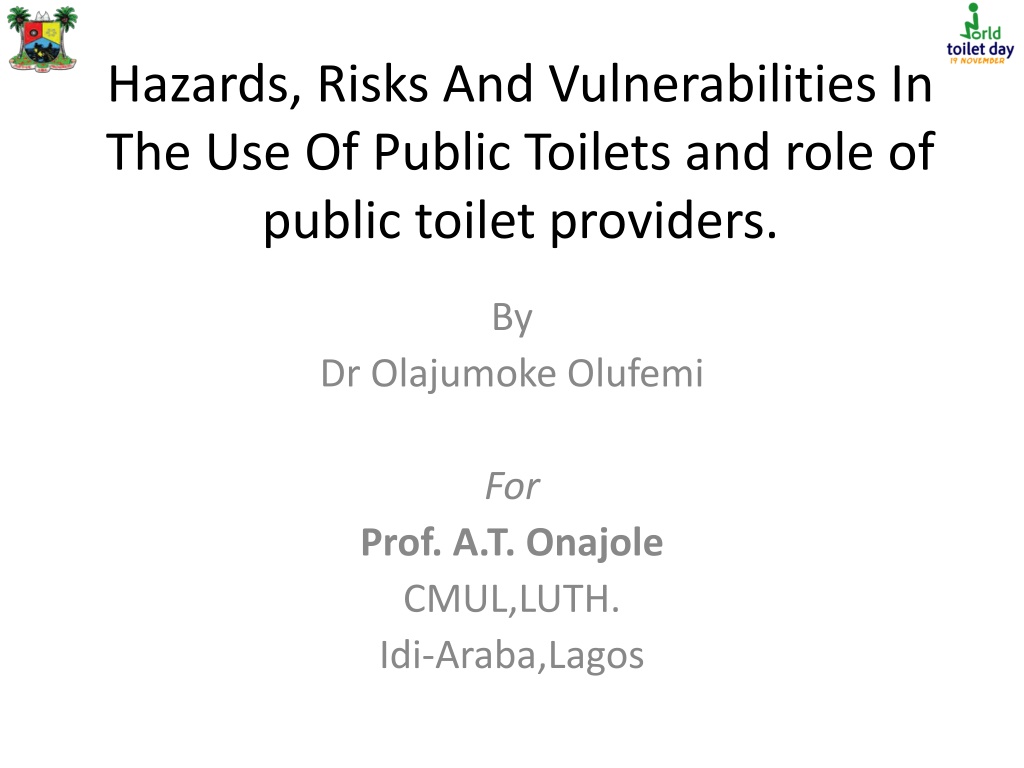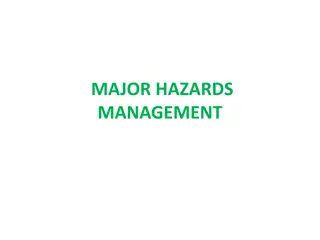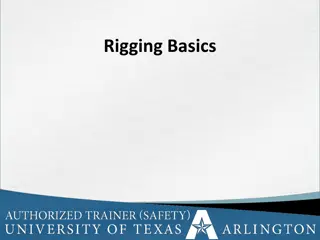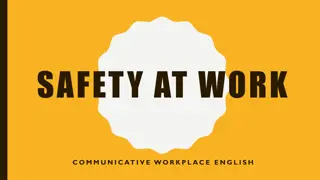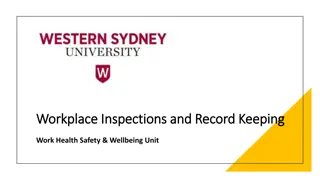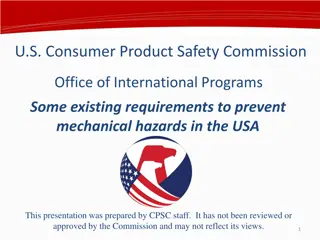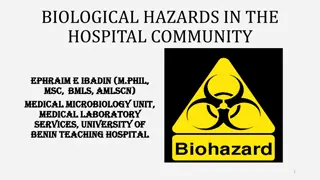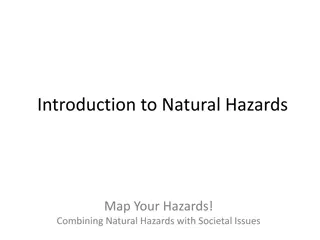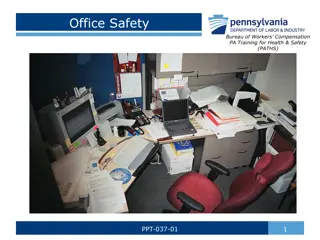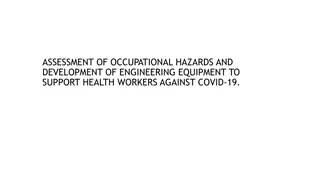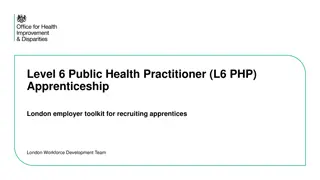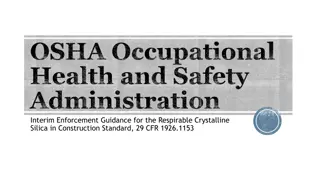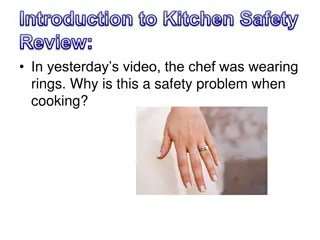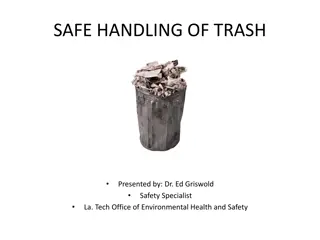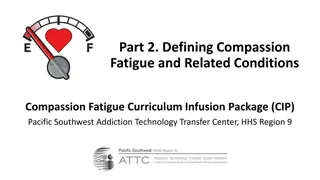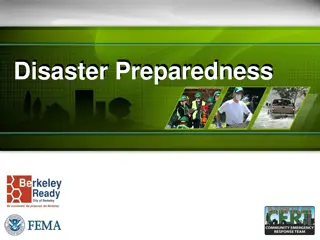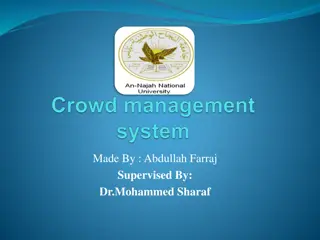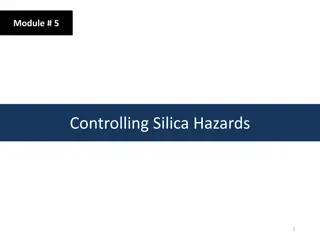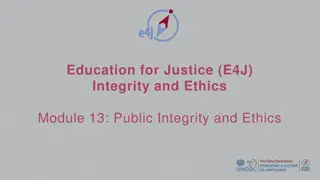Understanding Hazards and Risks Associated with Public Toilets
Public toilets play a crucial role in society, yet they come with hazards, risks, and vulnerabilities. Lack of access to clean and safe toilets affects millions globally. Diseases transmitted through unhygienic toilets pose health threats, especially to women and children. Contrary to myths, most toilet-acquired diseases are not sexually transmitted but spread through contaminated surfaces. Recognizing symptoms and understanding preventive measures is essential for public health.
Download Presentation

Please find below an Image/Link to download the presentation.
The content on the website is provided AS IS for your information and personal use only. It may not be sold, licensed, or shared on other websites without obtaining consent from the author. Download presentation by click this link. If you encounter any issues during the download, it is possible that the publisher has removed the file from their server.
E N D
Presentation Transcript
Hazards, Risks And Vulnerabilities In The Use Of Public Toilets and role of public toilet providers. By Dr Olajumoke Olufemi For Prof. A.T. Onajole CMUL,LUTH. Idi-Araba,Lagos
Why all this toilet talk? 1 in 3 people on this planet still don t have access to a clean and safe toilet. More people in the world have a mobile phone than a toilet. Of the world s 7 billion people, 6 billion have mobile phones but only 4.5 billion have access to toilets or latrines. 1,000 children die daily due to poor sanitation Better sanitation supports better nutrition and improved health, especially for women and children. Every $1 spent on water and sanitation generates a $4.3 return in the form of reduced health care costs. Sustainable development goal 6 calls on the international community to ensure access to toilets by 2030
"Shit Business is serious Business" - - Mr Isaac Durojaiye (Otunba Gadaffi ,SAN)
Introduction The use of public toilets is something we all really cannot do without. All people are at some risk of toilet diseases but women and girls are at higher risks. The use of toilets by several people with different backgrounds, hygienic ideas can lead to infections from a dirty toilet seat, flush, door, knobs, handles and any other surfaces.
A common myth about toilet disease That sexually transmitted disease(STIs) and HIV can be acquired from the use of a dirty toilet. The truth is: Unprotected sexual intercourse and contact is the way STIs and HIV can be acquired, NOT toilet seats. Most germs that cause these infections cannot survive outside the human body. Even those germs that can survive will be prevented by the intact skin and a good immune system.
What then are these toilet diseases? Diseases that can be acquired from the use of unhygienic toilets and are usually spread through the users hands and any other formites (napkins, phones, handbags e.t.c) from germs that lie on these surfaces. They are transmitted : 1) Directly by aerosol containing germs when flushing. 2) Indirectly through fingers or personal items.
Symptoms of toilet-acquired diseases Commonly manifest like other feaco-oral diseases abdominal pains, diarrhea and vomiting. Symptoms of flu and common-cold. This is common amongst those who go into the toilets with cell phones, handbags, scarfs and other personal items.
How can users minimize the risks of toilet hazards? 1) Avoid sitting directly on the toilet seats especially when visibly stained. 2) Ensure you don t have an open wound or sores on your buttocks. 3) Always wipe the toilet seats with tissues or disposable wipes before use. 4) Put layers of tissues on the toilet seat before sitting. 5) DO NOT stand on the toilet bowl; it can break and lead to severe injuries. 6) Avoid touching the walls of the toilet while using it.
How can users minimize the risks of toilet hazards? - 2 7) Use tissue paper to flush the toilet and open the door on your way out. 8) When flushing, don t put your face over the toilet bowl as aerosol of germs can get into your mouth, nose and eyes. 9) Wash your hands thoroughly with soap and water after the use of the toilet. 10) Use a disposable tissue to close the tap after washing your hands.
How can users minimize the risks of toilet hazards? - 3 11) NEVER use a shared hand towel/napkin to clean your hands after washing. 12) Avoid taking your cell phones, bags, food items and other personal items into the toilet where possible. Where you must, hang your bag on the bag holder or around your neck. 13) Use a hand sanitizer after leaving the toilet area before handling food or shaking hands.
Hazard commonly overlooked Whenever you enter a restroom to look at your face or adjust your clothes you are less likely to wash your hands because you think you didn t use the toilet ;but you actually did!! *When using a public toilet, care and caution must be exercised; but its not only your buttocks you should be worried about, its actually your hands!!
To our noble providers of toilet services ; How Can We Do It Better?
Minimum standards for operating public toilets Sufficient toilets must be available Toilets are easily accessible to all-Including children and disabled persons. Toilets provide privacy and security- Including changing places. Toilets are appropriate to local cultural and social conditions, and to users. Toilets are hygienic to use and easy to clean Toilets have convenient handwashing and dustbin facilities close by. A cleaning and maintenance routine is in operation At least once every 2-4 hours
Mobile toilets These are chemical toilets which use chemical to deodorize the waste instead of storing it in a hole or piping it away to a sewage treatment plant. Common types include aircraft lavatory, some passenger train toilets and the portable toilets used on construction sites and at large gatherings. They can normally be identified with a blue-colored dye in the bowl water.
Restroom Cleaning Procedures 1) Set-up to clean: When ready transport all supplies to the patient's bathroom. Then bring the cleaning cart into room. Set up "Caution" sign. 2) Apply disinfectant to the toilet bowl 3) Replenish supplies: Paper towels, toilet tissue, hand soap. 4) Dust top to bottom Using a woolly duster with cover, dust all overhead vents, lights, partitions and ledges. 5) Sweep or Dust mop floor Start at one end of the room by pushing the dust mop or broom. Avoid going backwards.
Restroom Cleaning Procedures- 2 6) Clean fixtures and mirrors with a disinfectant solution or window cleaner and then dry with a clean wiper. Clean waste receptacles. Remove liner and dispose of in trash container on cart. 7) Finish cleaning toilets and urinals. Flush toilet. Be sure to clean under the rim. Clean exterior of toilets and urinals. 8) Mop floor. Place mop in solution, wring out until mop is damp. 9) Return restroom to service and remove "Closed for Cleaning" sign. Move cleaning equipment to service closet when finished and clean-up the cleaning tools. 10)Wash hands and arms carefully and according to training.
Its important that you; Have all the appropriate cleaning supplies on the cleaning cart BEFORE going in to clean. Be careful not to use cleaning chemicals on any surface for which they are not intended. Be especially cautious when using acid cleaners. Never mix chemicals. It could cause serious or even fatal injury.
Remember These three rules of restroom cleaning: Rule #1:Always clean top to bottom. Rule #2: Clean from dry to wet. Rule #3: Work towards the exit door. Use of the same mops, dusters and cleaners that are used in the toilet for other parts of the building in a public place should NEVER be done. It puts even those who never entered the toilets at risk of diseases.
Bibliography http://www.un.org/en/events/toiletday/ http://worldtoilet.org/what-we-do/world- toilet-day/ http://www.planningportal.gov.uk/buildingreg ulations/approveddocuments/ Public restrooms daily cleaning. Unisource Canada, Inc. http://www.unisource.ca
